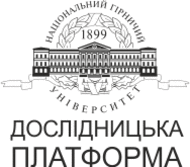№81-11
Analysis of fracture kinetics of 10G2FB steel samples depending on the structural state
O. Rakaev1, K. Ziborov2, І. Soloviov2, V. Filatov2, D. Mamchur1
1Ukrainian State University of Science and Technologies, Dnipro, Ukraine
2Dnipro University of Technology, Dnipro, Ukraine
Coll.res.pap.nat.min.univ. 2025, 81:116–122
Full text (PDF)
https://doi.org/10.33271/crpnmu/81.116
ABSTRACT
Purpose. Study of the main laws of fracture kinetics of steel type 10G2FB in different morphological types of bainite structure.
Methodology. To achieve the goal, modern methods of studying the structure and properties of the metal were used in the work, namely: optical microscopy, scanning electron microscopy, macro- and microfractographic analysis of fracture surfaces and determination of mechanical properties.
Results. The fracture mechanisms of steel 10G2FB with different morphological types of bainite structure were shown and investigated. The fracture kinetics of steel samples with different morphological types of bainite structure were shown and described. It was shown that, from the point of view of fracture kinetics, steel 10G2FB is very well suited for use in the manufacture of metal structures for critical purposes.
The originality. Further development of the theoretical position of the kinetics of the collapse of low-carbon steels in storage due to the morphology and spatial orientation of the bainitic warehouse structure has begun. First, for certain grades of steel, a positive infusion of molding of intermediate-type structures is shown to prevent critical collapse during vicorization in structures of a similar type. Accelerated cooling at austenitization temperatures up to 650°C implements a viscous mechanism for the flow of micro-sills, so plastic deformation is important along with these present elements quasi-cleavage. At a temperature of 600°C, along with the ferite-pearlite structure, a colony of upper bainite was present. The appearance of colonies is explained by the fact that the crack spread throughout the bainitic ferite. This allows us to assume that this type of colony is positioned parallel to the front of the widening crack.
Practical significance. Replacing some of the frame elements with high-quality low-carbon micro-alloyed vanadium and non-alloy steel 10G2FB will lead to a change in waste to metal from the same option as the frame elements were produced. With standard steel 09G2S, in addition, there will be a reduction in the weight of the frame, which will undoubtedly lead to many material benefits.
Keywords: low-alloy steels, bainite, ferrite, loading, deformation, fracture surfaces, raster microscopy, fractography.
References
1. Liu, F., Yu, X., Huang, C., He, L., Chen, Y., & Bu, W. (2015). Microstructure and mechanical properties of AerMet 100 ultra-high strength steel joints by laser welding. Journal of Wuhan University of Technology-Mater. Sci. Ed., 30(4), 827–830
2. Keehan, E., Zachrisson, J., & Karlsson, L. (2010). Influence of cooling rate on microstructure and properties of high strength steel weld metal.Science and Technology of Welding and Joining, 15, 233–238. https://journals.sagepub.com/doi/10.1179/136217110X12665048207692?icid=int.sj-abstract.citing-articles.5
3. Svensson, L.-E. (2007).Microstructure and Properties of High Strength Weld Metals. Materials Science Forum, 539–543, 3937–3942. https://www.semanticscholar.org/paper/eb6b76c01ec0d8067a7e429ed77c1d92592e0498
4. Markashova, L. I., Poznyakov, V. D., Shelyagin, V. D., Berdnikova, E. N., Bernatsky, A. V., & Alekseenko, T. A. (2018). Effect of metal structure on service properties of high-strength steel welded joints produced using different methods of welding. Automatic Welding, 2018(2), 11–18. https://doi.org/10.15407/as2018.02.02
5. Ohtani, H., Okaguchi, S., Fujishiro, Y., & Ohmori, Y. (1990). Morphology and properties of low-carbon bainite. Metallurgical Transactions A, 21(3), 877–888. https://doi.org/10.1007/bf02656571
6. Bramfitt, B. L., & Speer, J. G. (1990). A perspective on the morphology of bainite. Metallurgical Transactions A, 21(3), 817–829. https://doi.org/10.1007/bf02656565
7. Feng, X., Wang, B., Gu, N., & Ma,X. (2005). Effect of moderate temperature deformation on microstructure of link chain steel 23MnNiCrMo54. Journal of iron and steel research, 3, 42–46. http://caod.oriprobe.com/articles/8919493/Effect_of_Moderate_Temperature_Deformation_on_Microstructure
8. Laukhin, D., Ziborov, K., Fedoryachenko, S., & Rott, N. (2024). Influence of Temperature-Strain Parameters of Shelters Reinforcing Materials on Increasing Properties in the Z-Direction. Materials Science Forum, 1126, 111–118. https://doi.org/10.4028/p-j10tbj




